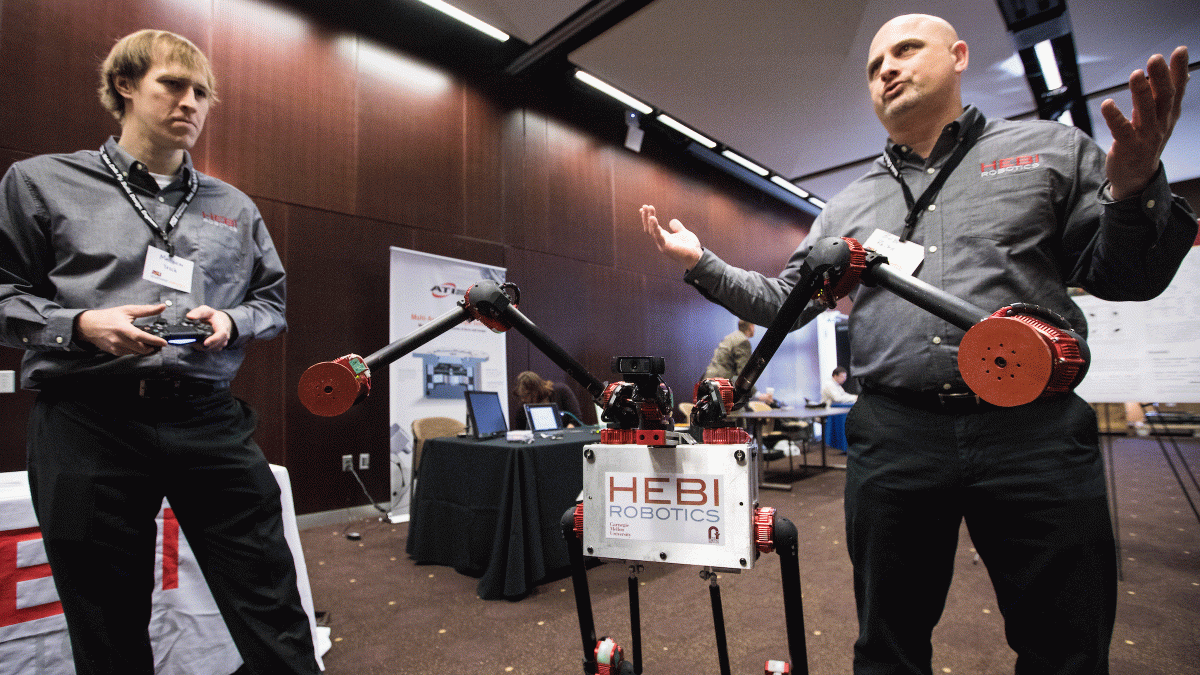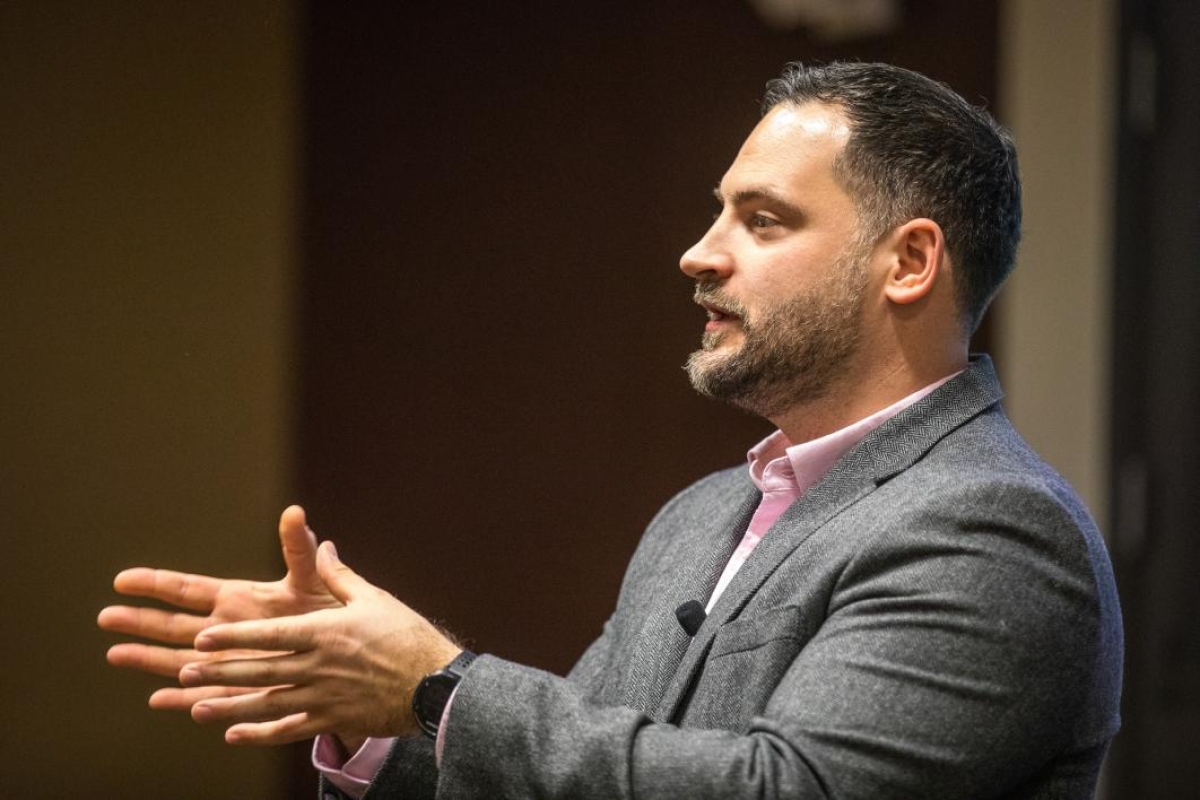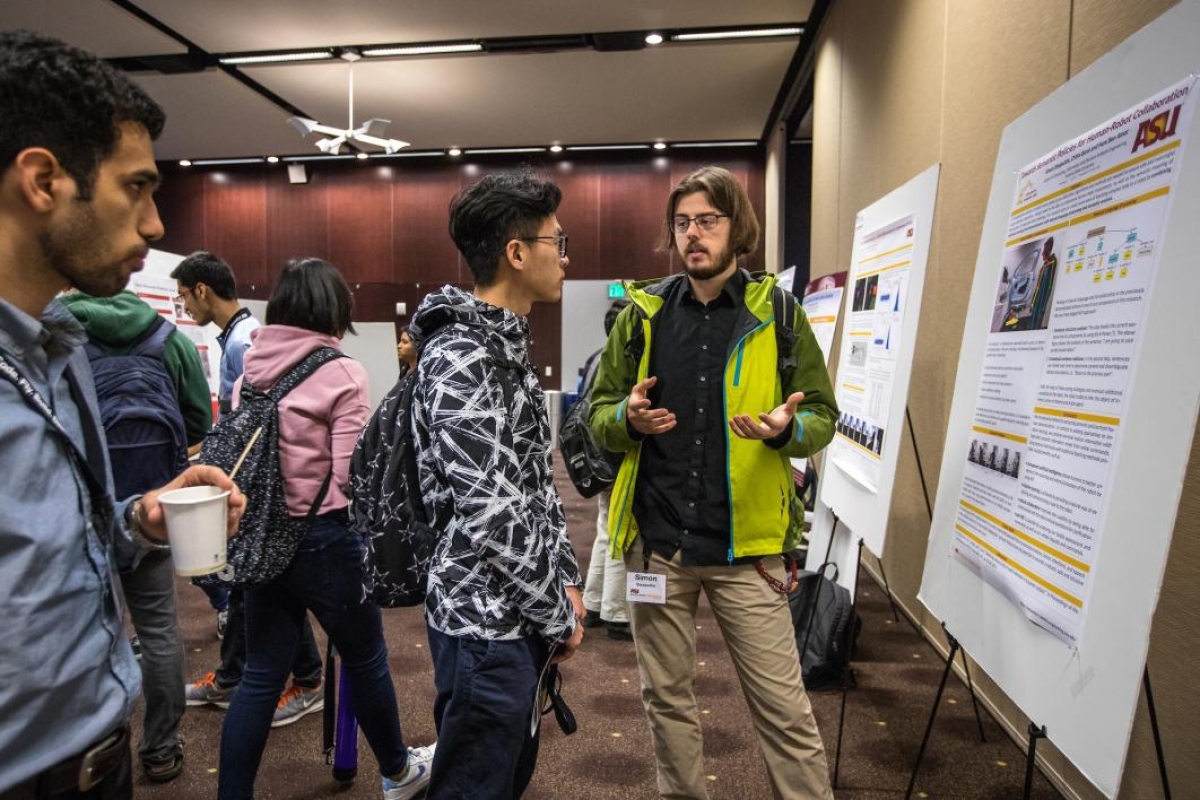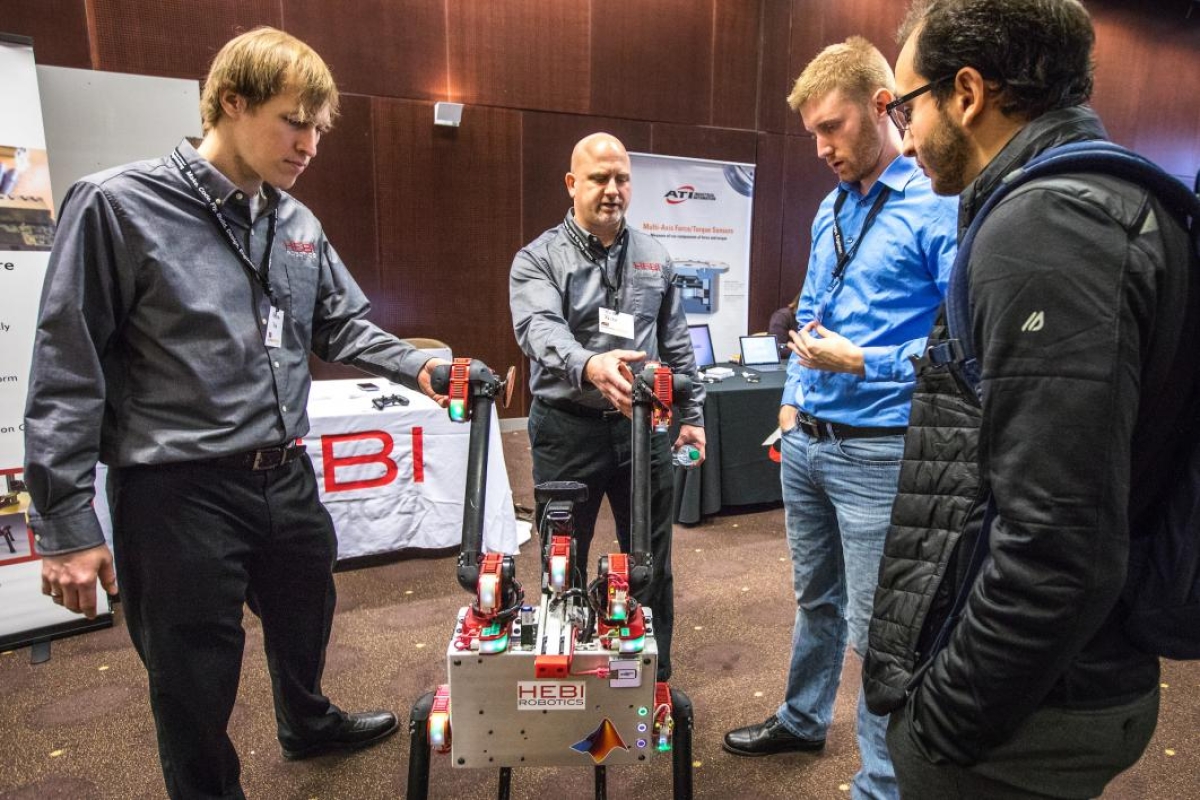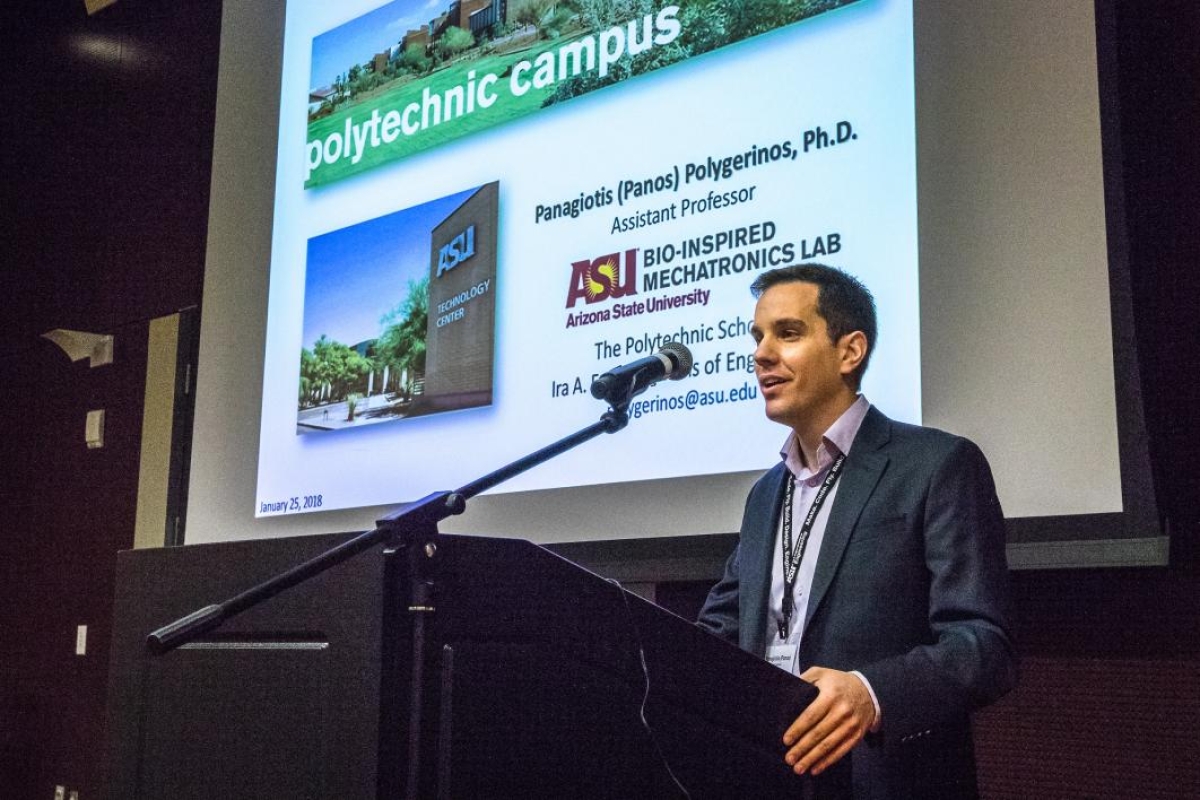Pope Francis, Elon Musk and Hollywood science fiction writers regularly envision smart robots taking over jobs and invading our privacy. Presentations at a symposium at Arizona State University this week, however, established that the next generation of robots will be assisting humanity rather than contributing to its doom.
“We are not all going to die because of robots,” said Aaron D. Ames, from the California Institute of Technology and plenary speaker at the Southwest Robotics Symposium. “Let’s keep these comments in context. They need to learn more about AI and robotics.”
According to Ames, the humanoid robots we see going viral in social media, like Google-owned Boston Dynamics’ Atlas walking through snow and doing backflips, are all control driven. “There’s zero AI on those robots,” Ames said.
“But, there’s tremendous potential to bring AI and control together on robotic systems in ways that will make our lives better, such as improve mobility for the impaired, aid in disaster response and enable space exploration,” he said.
The symposium, in addition to serving as a platform for researchers to learn about developing technologies and establish collaborative relationships, is also providing a framework to present robotics in terms that aren’t threatening.
“We are developing ways to talk about our research in the context of helping humans,” said Panagiotis Artemiadis, symposium committee chair and an associate professor in ASU’s Ira A. Fulton Schools of Engineering. “The majority of the work we do is about enriching lives.”
Bio-inspired robotics
Video by Ken Fagan/ASU Now
Bio-inspired robotics takes concepts in nature and applies them to engineering design. Examples at ASU include studying basilisks and octopuses to develop robots that can work in complex terrains for purposes like search and rescue, execute tasks on asteroids or other planets, and employ suction technologies for gripping and climbing.
“A collaborative team at ASU also is creating bio-inspired systems, using ferrofluids, or magnetic fluids, that can subdivide and regenerate,” said Hamid Marvi, an assistant professor in the ASU’s School for Engineering of Matter, Transport and Energy. “These bio-inspired breakthroughs will be valuable in a wide range of medical applications, such as targeted drug delivery, microsurgery and tissue biopsy.”
Assistive devices
Video by Ken Fagan/ASU Now
According to Thomas Sugar, an engineering professor at ASU’s Polytechnic School, assistive devices are moving into the mainstream.
“Sitting is the new smoking,” he said. “It increases the chances of heart disease, which is now killing more people than communicable diseases.”
In answer, assistive devices offer a boost to humans: Wearable exoskeletons support hips and knees to enable standing at a workstation, and locomotion systems are designed to assist warehouse workers to travel from one end of the facility to another.
Mechatronic technologies are being combined with soft robotics to create delicate, user-friendly devices for people with muscle-impairment diseases like muscular dystrophy, giving them the ability to grip and move items they otherwise could not manipulate.
Also in the assistive-device category is an anklebot (a robotic device that provides stability for patients whose gait has been impaired by stroke or diseases like Parkinson’s), rehabilitation treadmills that use a functioning limb to mirror muscle control in the impaired limb to restore normal mobility, and a variety of sensor-monitoring technologies that use treadmills or other therapeutic devices.
Human partners and autonomous robotic systems
Robot learning, whether to enable a robot to serve as a “third arm” to a human technician, execute safety protocols in autonomous vehicles or recognize and adapt to changing terrain in a search-and-rescue mission, is a growing component of robotics research.
As robotics becomes more sophisticated, so do the algorithms that enable them to learn and interact with humans.
In the arena of computer vision, or the ability of a system to recognize and react to visual cues, computer science Assistant Professor Yezhou Yang cites the description of a panda in mainland China as a cat-like bear, where in Taiwan it’s identified as a bear-like cat. In addition, a young panda more closely resembles a cat, while a mature panda looks more like a bear. It’s more important to identify the concept about the visual image than to simply assign it to a semantic category.
Artificial intelligence: Bridge between humans, autonomous systems
Rather than seeing artificial intelligence as the nemesis of humankind, Heni Ben Amor, an ASU assistant professor in Computer Information and Decisions Systems, describes AI as the mechanism that helps robots support human partners.
“AI is a set of mathematical tools that allows systems to adapt to the world we’ve created for human beings,” Ben Amor said. “It helps us live a comfortable, meaningful life, providing the systems to accommodate unmet needs in rehabilitative medicine, in our homes and in our places of work.”
Top photo: Hebi Robotics vendors Matthew Tesch (left) and Bob Raida explain some of the versatile application modules on their Igor kit robot at the 2018 Southwest Robotics Symposium at the Memorial Union in Tempe on Thursday. Hebi is a spinoff from Carnegie Mellon University. Hundreds of participants and vendors from around the country attended the two-day conference that highlights soft and bio-robotics, rehabilitation and wearable devices, units for space exploration, autonomous systems and other specialized areas. Photo by Charlie Leight/ASU Now
More Science and technology

Stuck at the airport and we love it #not
Airports don’t bring out the best in people.Ten years ago, Ashwin Rajadesingan was traveling and had that thought. Today, he is an assistant professor at the University of Texas at Austin, but back…

ASU in position to accelerate collaboration between space, semiconductor industries
More than 200 academic, business and government leaders in the space industry converged in Tempe March 19–20 for the third annual Arizona Space Summit, a statewide effort designed to elevate…

A spectacular celestial event: Nova explosion in Northern Crown constellation expected within 18 months
Within the next year to 18 months, stargazers around the world will witness a dazzling celestial event as a “new” star appears in the constellation Corona Borealis, also known as the Northern Crown.…


